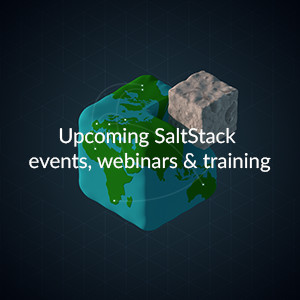salt.modules.boto_elasticache¶
Connection module for Amazon Elasticache
New in version 2014.7.0.
| configuration: | This module accepts explicit elasticache credentials but can also utilize IAM roles assigned to the instance trough Instance Profiles. Dynamic credentials are then automatically obtained from AWS API and no further configuration is necessary. More Information available at: http://docs.aws.amazon.com/AWSEC2/latest/UserGuide/iam-roles-for-amazon-ec2.html
If IAM roles are not used you need to specify them either in a pillar or in the minion's config file: elasticache.keyid: GKTADJGHEIQSXMKKRBJ08H
elasticache.key: askdjghsdfjkghWupUjasdflkdfklgjsdfjajkghs
A region may also be specified in the configuration: elasticache.region: us-east-1
If a region is not specified, the default is us-east-1. It's also possible to specify key, keyid and region via a profile, either as a passed in dict, or as a string to pull from pillars or minion config:
|
|---|---|
| depends: | boto |
Authorize network ingress from an ec2 security group to a cache security group.
CLI example:
salt myminion boto_elasticache.authorize_cache_security_group_ingress myelasticachesg myec2sg 879879
-
salt.modules.boto_elasticache.create(name, num_cache_nodes, engine, cache_node_type, replication_group_id=None, engine_version=None, cache_parameter_group_name=None, cache_subnet_group_name=None, cache_security_group_names=None, security_group_ids=None, snapshot_arns=None, preferred_availability_zone=None, preferred_maintenance_window=None, port=None, notification_topic_arn=None, auto_minor_version_upgrade=True, wait=False, region=None, key=None, keyid=None, profile=None)¶ Create a cache cluster.
CLI example:
salt myminion boto_elasticache.create myelasticache 1 redis cache.t1.micro cache_security_group_names='["myelasticachesg"]'
-
salt.modules.boto_elasticache.create_cache_security_group(name, description, region=None, key=None, keyid=None, profile=None)¶ Create a cache security group.
CLI example:
salt myminion boto_elasticache.create_cache_security_group myelasticachesg 'My Cache Security Group'
-
salt.modules.boto_elasticache.delete(name, wait=False, region=None, key=None, keyid=None, profile=None)¶ Delete a cache cluster.
CLI example:
salt myminion boto_elasticache.delete myelasticache
-
salt.modules.boto_elasticache.delete_cache_security_group(name, region=None, key=None, keyid=None, profile=None)¶ Delete a cache security group.
CLI example:
salt myminion boto_elasticache.delete_cache_security_group myelasticachesg 'My Cache Security Group'
-
salt.modules.boto_elasticache.exists(name, region=None, key=None, keyid=None, profile=None)¶ Check to see if a cache cluster exists.
CLI example:
salt myminion boto_elasticache.exists myelasticache
-
salt.modules.boto_elasticache.get_cache_subnet_group(name, region=None, key=None, keyid=None, profile=None)¶ Get information about a cache subnet group.
CLI example:
salt myminion boto_elasticache.get_cache_subnet_group mycache_subnet_group
-
salt.modules.boto_elasticache.get_config(name, region=None, key=None, keyid=None, profile=None)¶ Get the configuration for a cache cluster.
CLI example:
salt myminion boto_elasticache.get_config myelasticache
-
salt.modules.boto_elasticache.revoke_cache_security_group_ingress(name, ec2_security_group_name, ec2_security_group_owner_id, region=None, key=None, keyid=None, profile=None)¶ Revoke network ingress from an ec2 security group to a cache security group.
CLI example:
salt myminion boto_elasticache.revoke_cache_security_group_ingress myelasticachesg myec2sg 879879

